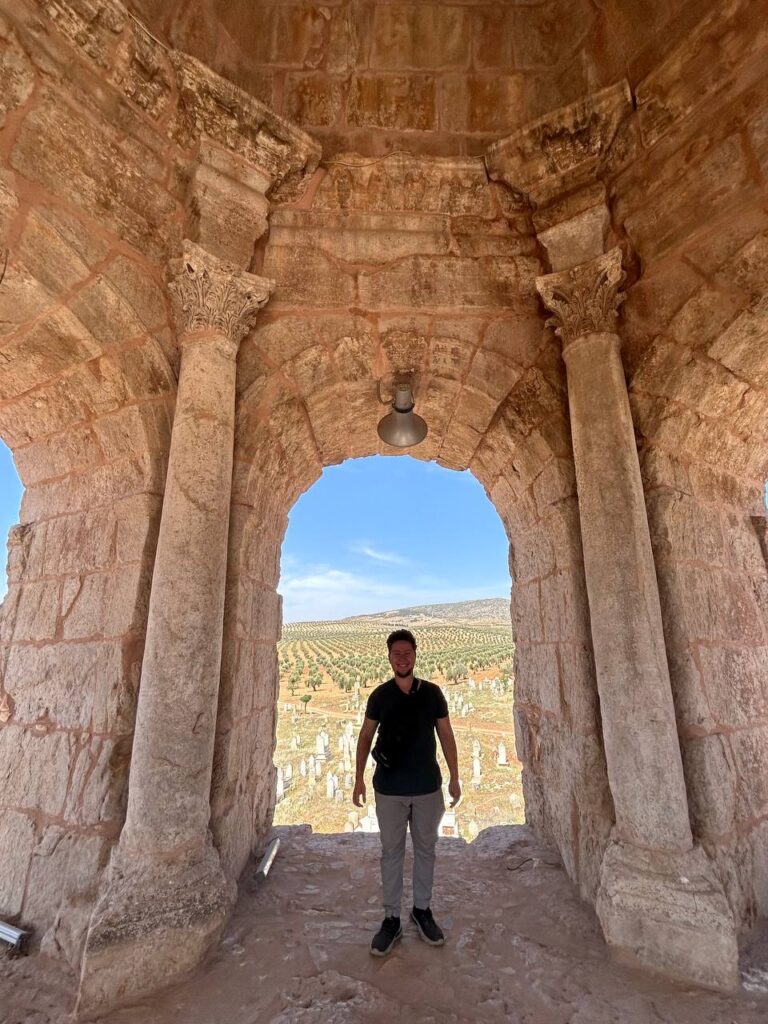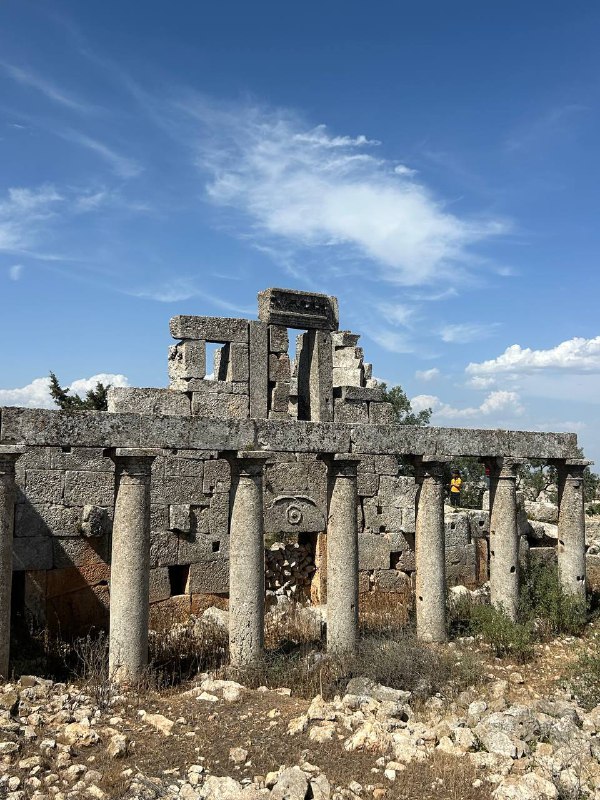Located in Aleppo countryside, beautiful land of Afrin, Syria, is populated primarily by Kurds. We visited this beautiful region to May 2025 to learn more about it’s recent and ancient history, and we now offer trips to Afrin as part of our Syria tours program. What is there to know, and to see, in this beautiful region of Syria?

Recent History of Afrin, Syria
During the Syrian war, the Afrin region was controlled for the most part by the Kurdish YPG, with Russian support (as opposed to American, as in North East Syria). However, in 2018, following a Russian withdrawal, the Turkish army and their Syrian allies invaded, taking control of the region. I’m not going to get too deep into the politics, as that’s not what I cover, but you can read more about it here.
Olive production in Afrin

In Afrin, the local economy relies mostly upon olive production. Everywhere you look in the whole region is just filled with olive trees! Throughout the whole of Syria, Afrin olives are famous, with the main olive season being in October. Locals told me that over 60% of the total land area of Afrin is covered with olive trees.
Historical sites in Afrin, Syria
The most famous historical site in Afrin is Ain Dara, with an ancient temple dating back thousands of years. However, it is said that during the invasion in 2018, most of the ruined site was reduced to rubble and famous basalt lion was stolen. We had heard that the current site is filled with landmines and as such, we didn’t even attempt to go. We did, however visit some other sites.

The northern part of Afrin, Syria, has two Roman Bridges, which are said to date back to the 2nd Century. Just like the rest of Afrin, you can admire these bridges whilst looking at the olive tree landscape in the background. These two Roman bridges are located near the Nebi Huri Mausoleum, another important site.

The Nebi Huri Mausoleum and mosuqe in Afrin, Syria, was built around a Roman-era tower/tomb, dating back to the 2nd or 3rd Century BC. However, in the 14th Century AD, under the Mamluk period, the tomb was turned into a Muslim shrine, dedicated to a Sufi saint known as Nebi Huri. In the recent war in 2018, it was heavily damaged, but has been renovated by Turkish authorities in 2021.

The village of Brad has got ancient churches and ruins dating back to the 5th Century AD. However, the real importance of these ruins is said to be because it is the burial place of St Maron, the founding figure for Maronite Christians, who make up the majority of Christians in Lebanon. Ancient churches were built around his burial place. The nearby town of Kimar is also filled with ancient ruins, including old pagan temples. Here is a picture of Kimar, below:

Natural attractions in Afrin, Syria
Aside from the rolling hills and olive trees filling the horizon, Afrin is also home to a beautiful lake, known as Meydanki lake.

On Meydanki lake, we took a boat ride and danced to Kurdish music. It was so much fun!
If you’re interested in visiting Afrin, or other parts of Syria, make sure you check out our Syria tours or contact us for a private tour.